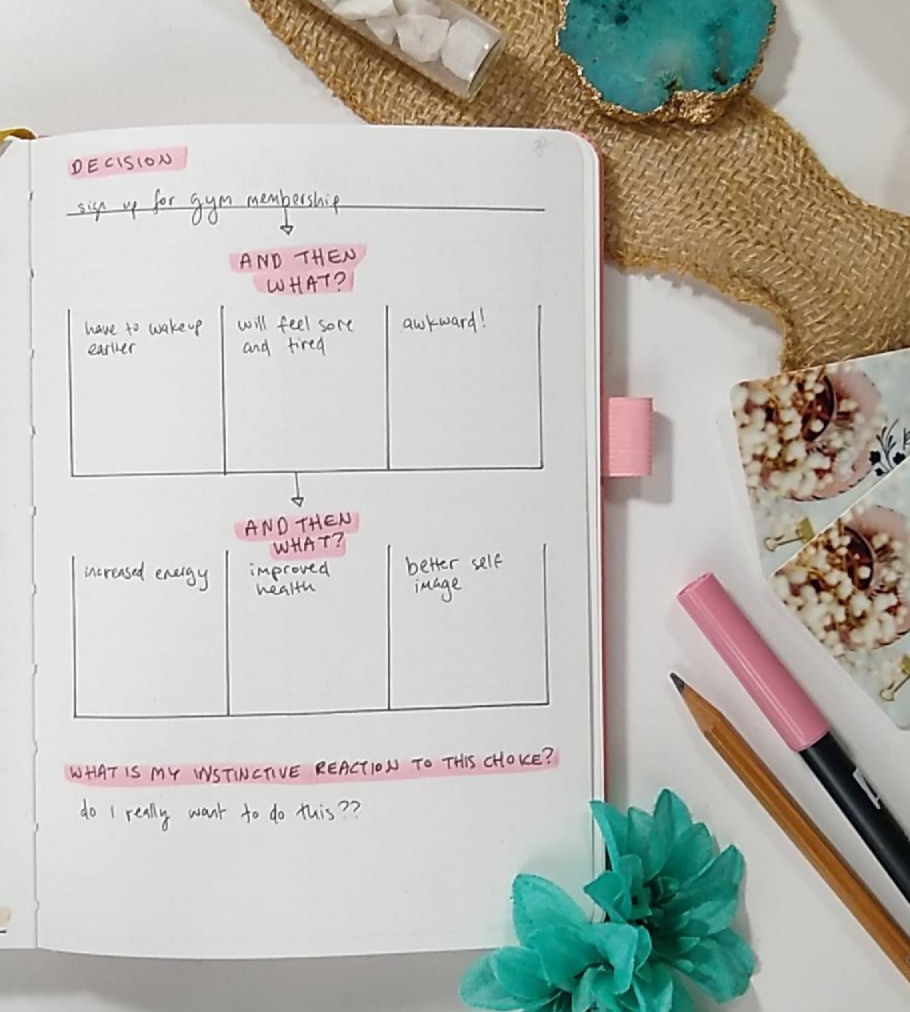Everyday, we make thousands of decisions. They range from small decisions that happen in an instant to big decisions that weigh heavily on our mind. On the one hand, we think about what to wear, what to eat for breakfast, and how to respond to that email. On the other hand, we wonder whether or not to sign up for a course, and if it’s right to leave a job.
There are so many decisions that we make that there’s something called decision fatigue. Our brains get tired from so many decisions. Sometimes our indecisiveness, or fear of making a wrong decision, can drain us.
Let’s use our bullet journals to make our decision making process easier and quicker. These two exercises won’t make your decision for you, but they can give you more clarity.
Second Order Thinking
I recently came across a concept called second order thinking (discussed by Howard Marks in his book The Most Important Thing). When making a decision, ask yourself these three words: And then what?
Asking yourself, “And then what?” helps us see beyond the immediate consequence of our action, and avoid short-sighted decisions. This method is all about looking down the road to explore what might come of this choice later on. It’s the opposite of instant gratification.
Here’s an example. Let’s say you’re thinking of starting a gym membership. Write down your decision at the top of the page.
Then ask yourself: And then what? Write down what short-term pro and con results come from that choice. In this case it might be:
- Have to wake up earlier
- Will feel sore and tired
- Might feel awkward meeting new people there
In the next row, include what comes from that choice in the near future. In this case, that might be:
- Increased energy
- Overall health improvement
- Better self-image
Here we can already see that the list went from three cons to three pros.
For more complex decisions, you can create another set of pros and cons for long-term pros and cons.

Let’s go through another example. Let’s say you’re thinking about signing up for a course. Let’s consider the short-, medium-, and long-term results of this decision.
And then what?
- Less free time
- Costs money
- Increased social life
And then what?
- Make new connections
- Learn more about something that interests me
And then what?
- Advance career and earn more money
- Will be able to cut back on hours
- Feel fulfilled at work
Decision-making prompts
Besides for the exercise above, you can ask yourself one or a few of these questions to help you clarify the right choice for you.
Does this choice align with my values?
A choice that goes against your values is never a good idea.
What is my immediate, instinctive reaction to this choice?
Our intuition is extremely powerful. Listen to the voice inside and see what it has to say.
What does my experience tell me about this decision?
Sometimes we know that a choice isn’t good for us because of how similar choices worked out in the past. And vice versa.
Do I need more information/help from others?
We can so easily become stuck in our decision making process because we simply don’t have all the information or resources that other people can offer.
Choose whichever question(s) seem right at the time. Answer with no judgement and see what you learn!


